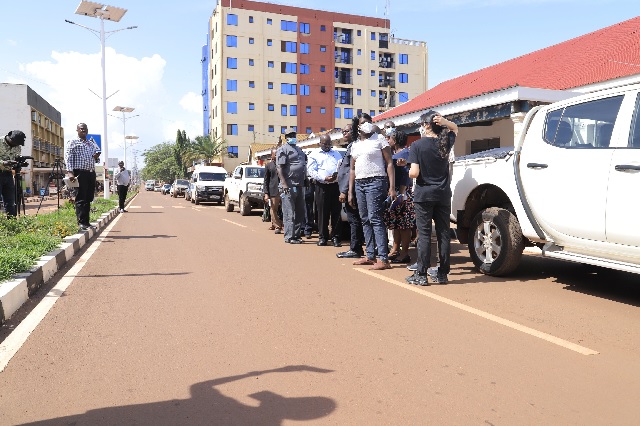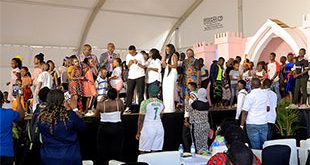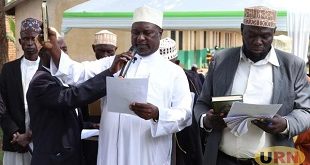
USMID Additional Financing-USMID-AF launched in 2018/19 for a five-year period maintains the development objective of enhancing institutional capacity of selected local governments
Kampala, Uganda | THE INDEPENDENT | Uganda’s new cities need to ensure that their physical development plans are designed and approved to attract new funding, according to executives at the global multi-lateral lender, World Bank.
The team, currently on inspection of cities, municipalities’ road works under USMID Additional Financing-USMID-AF also said entities need to ensure quality works and safety on new roads and those still under construction using its funds across the country.
“We would like to know if your designs are ready, as the new disbursements will be released in July this year,” said Martin Onyanchi, the task team leader of USMID at the World Bank.
Jinja City Mayor, Peter Kasolo, acknowledged the World Bank’s support through USMID’s interventions on improving our infrastructure.
“We thank you very much since this infrastructure development is within global development trends. However, a lot still needs to be done. With rains now. Our road networks are in a more sorry state,” he said.
“I appeal to the WBG_IDA through the USMID program to consider increasing the project budget, and also considering a larger envelope for Jinja, as the oldest town in this country,” he added.
Padde Emmanuel, the commissioner for Urban Development in the Ministry of Lands, Housing and Urban Development, said USMID could help Jinja City develop the Source of the Nile, being a major tourism source of income.
“We have worked on Jinja City’s Development Master Plan and it is now approved. But it needs to be immediately implemented in order for it to serve its purpose,” Padde said.
Uganda’s Ministry of Lands, Housing and Urban Development is currently implementing the second phase of the World Bank funded Uganda Support to Municipal Infrastructure Development (USMID) Program following the acquisition of the US$360 million.
The USMID Additional Financing-USMID-AF which kicked off in 2018/19 for a five-year period maintains the development objective of “enhancing institutional capacity of selected local governments.’’
The geographical coverage of the program has extended to eight additional municipal local governments of Kitgum, Kamuli, Mubende, Kasese, Busia, Ntungamo, Apac and Lugazi and also introduced support to 8 districts of Adjumani, Moyo, Yumbe, Arua, Isingiro, Kiryandongo, Kamwenge and Lamwo, that face a high influx of refugees to strengthen these Local Governments’ abilities to cope with the recent and future refugee influx in Uganda and to deliver critical infrastructure to host communities or local governments.
The program seeks to deepen impact and results in terms of institutional strengthening, planning and financial management, infrastructure provision and local economic development. The 8 municipalities will see a boost in infrastructure projects like improved roads, markets, abattoirs, stadiums and street lights among others.
USMID-AF draws a lot of lessons from the implementation of the first phase of USMID. USMID’s first phase expanded urban infrastructure and enhanced the capacity of 14 Municipal Local Governments of Arua, Gulu, Lira, Soroti, Moroto, Mbale, Tororo, Jinja, Entebbe, Masaka, Mbarara, Kabale, Fort Portal and Hoima to generate own source revenues, improve urban planning, strengthen financial management, procurement and environmental and social systems.
 The Independent Uganda: You get the Truth we Pay the Price
The Independent Uganda: You get the Truth we Pay the Price



